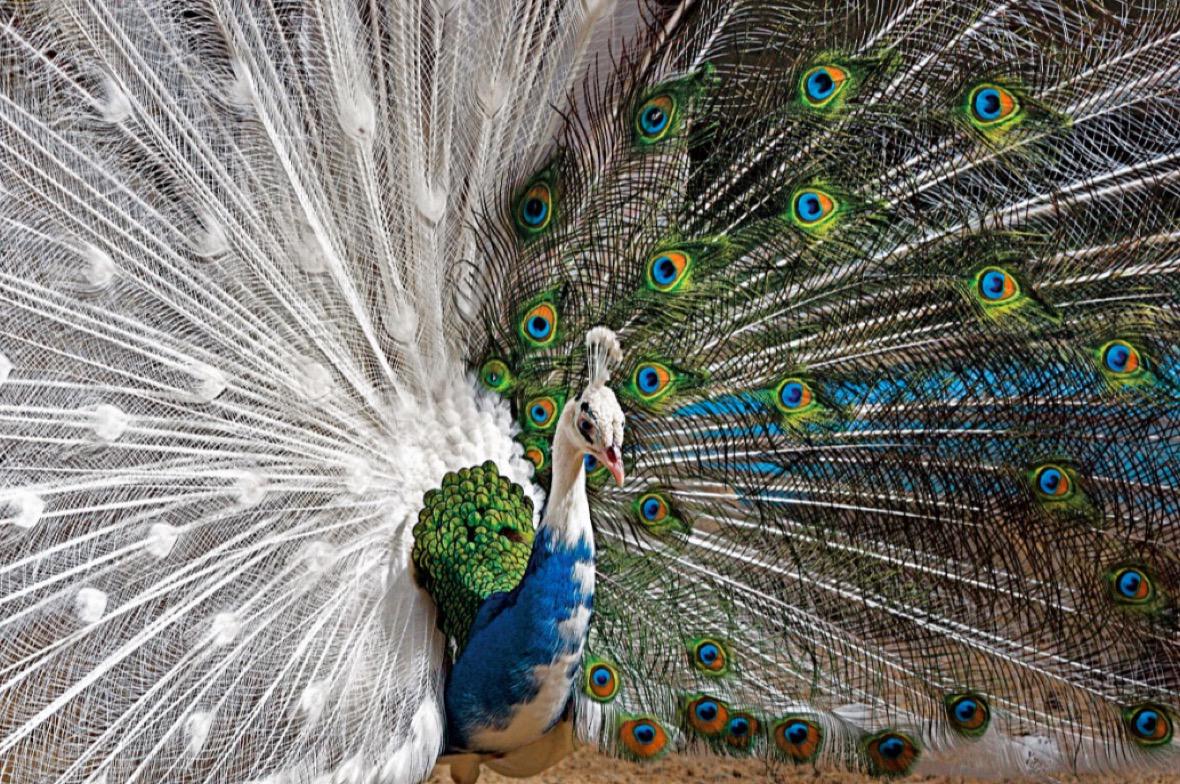In a quiet garden or palace courtyard, when sunlight filters through the trees, a sudden shimmer of white may catch the eye.
At first glance, it might seem like a vision — a ghostly peacock fanning its tail in a breathtaking display of pale brilliance.
But this isn’t a myth or trick of light.
It’s a leucistic peacock — one of nature’s rarest and most mesmerizing wonders.
🌿 What Is a Leucistic Peacock?
A leucistic peacock looks similar to an albino bird, but the difference lies in science.
Leucism is a genetic condition that causes a partial loss of pigmentation. Unlike albinism, it doesn’t affect the eyes, which remain their natural color instead of turning red or pink.
The result?
A peacock with soft ivory, cream, and silvery-blue feathers — a vision of understated majesty.
Where a typical Indian peacock bursts with sapphire, emerald, and gold, the leucistic one seems dipped in moonlight. When it spreads its magnificent tail, the hundreds of delicate eyespots gleam in pale shades, reflecting the sun like polished pearls.
✨ A Rare and Radiant Mutation
Leucism is extremely rare in peafowl. In most flocks, only a tiny fraction carry the genetic variation.
These birds are often selectively bred in aviaries and royal gardens, but wild leucistic peacocks are almost unheard of.
Their rarity makes them symbols of purity, transformation, and mystery. In Hindu and Persian mythology, the peacock is associated with immortality and divine beauty — and the pale variant only deepens that symbolism, appearing almost celestial.
🦚 Behavior Beyond Beauty
Despite their striking appearance, leucistic peacocks behave just like their colorful relatives.
They strut, call, and dance to attract mates, fanning their pale tails into huge shimmering fans. Their lack of pigment doesn’t seem to dim their confidence — if anything, it amplifies their elegance.
They are also surprisingly resilient. While bright plumage might make them more visible to predators, many live safely in protected parks and estates where their uniqueness is cherished.
🌙 The Symbolism of the White Peacock
Across cultures, the white or pale peacock has come to represent spiritual awakening, peace, and inner beauty.
Its muted feathers remind us that radiance doesn’t always require color — sometimes, light itself is enough.
For artists, poets, and photographers, the leucistic peacock serves as a living muse — a perfect blend of rarity, grace, and quiet power.
💡 Final Thoughts
The leucistic peacock is proof that even nature’s boldest designs can whisper instead of shout.
It doesn’t dazzle with color — it captivates with calm.
Every feather is a reminder that beauty takes many forms, and that sometimes, the most striking creatures are those who carry their brilliance in shades of white and silver.
In a world that often equates brightness with worth, the leucistic peacock stands as a symbol of something timeless:
✨ Elegance that doesn’t need color to be seen.


